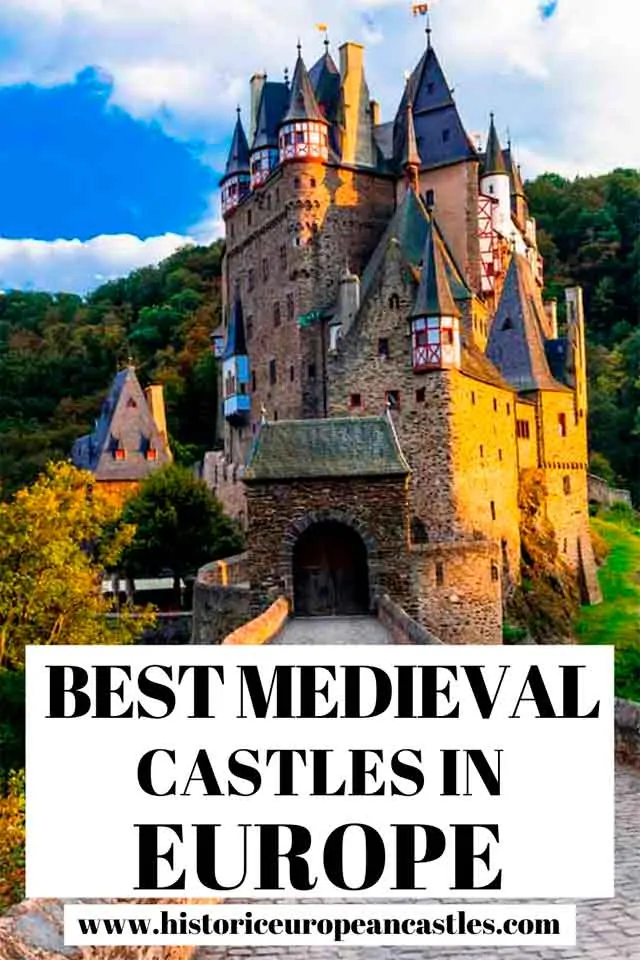From Slovakia to Switzerland, Wales to Warsaw, Poland, Europe is home to thousands of Medieval castles and fortresses, whether they look like they came straight out of a romantic fairytale or now stand in dramatic ruin.
Culture vultures are spoilt for choice on where to learn more about our history, whether admiring the views from hill-top and lakeside castles, learning the strategic defense systems of medieval times, or seeing how a fortress can be turned into a palace.
Disclaimer: This post contains affiliate links. This means that should you click on certain links and then subsequently purchase a product, I will receive a small commission.
Map of Medieval Castles in Europe
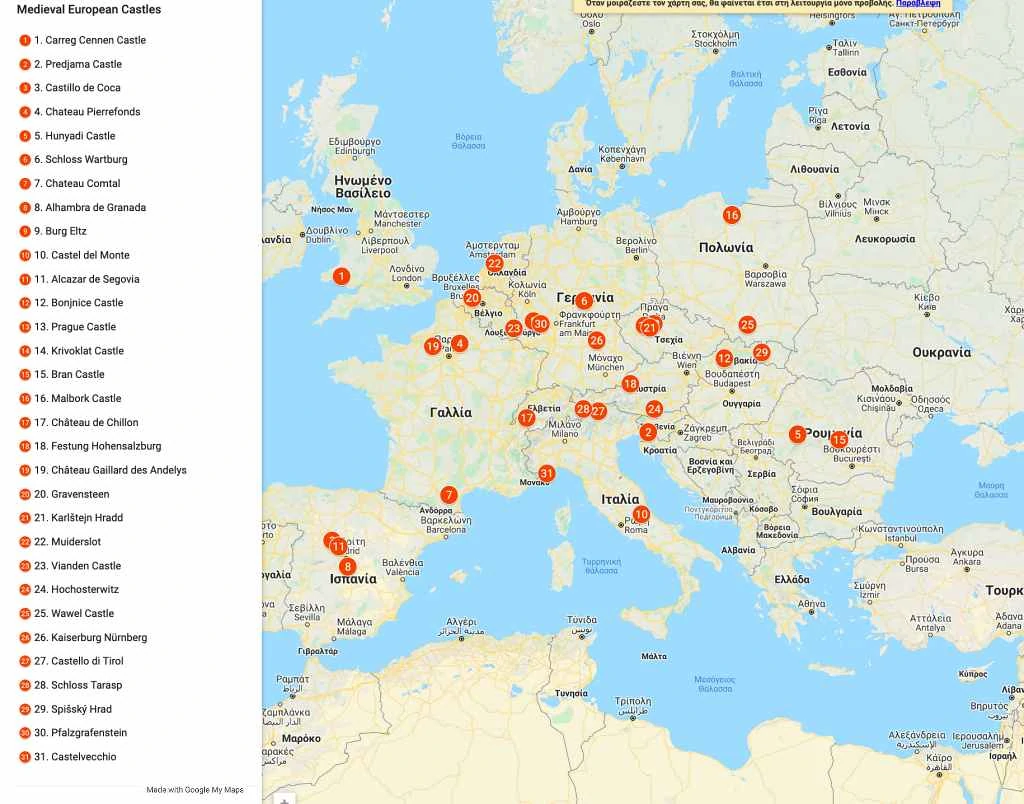
31 Famous Medieval Castles to Visit
1. Carreg Cennen Castle
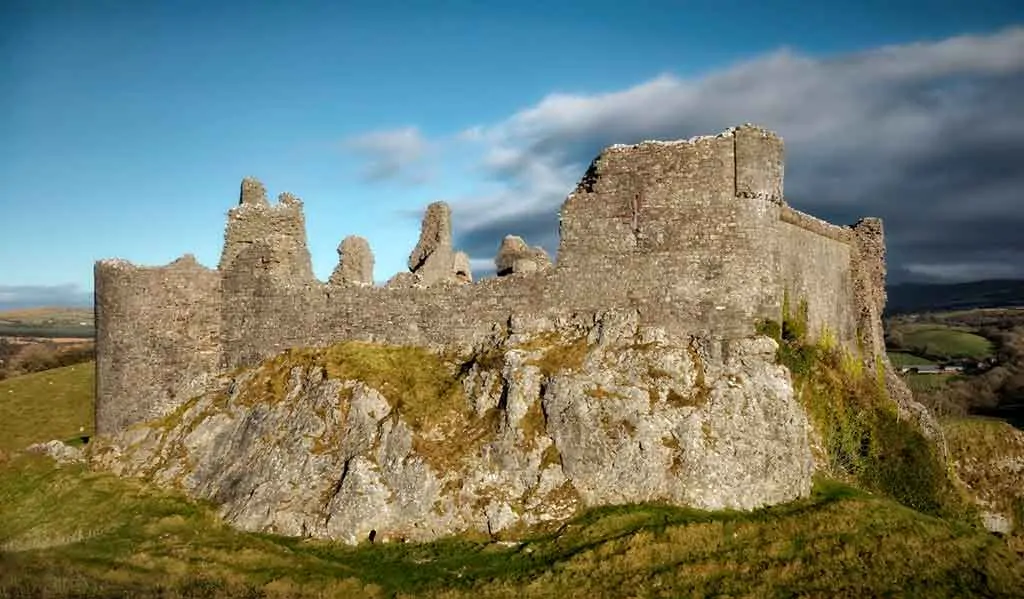
Surrounded by incredible natural beauty within the Brecon Beacons, the ruins of Carreg Cennen Castle dominate the landscape, built on a limestone precipice.
The Medieval fortress remains that are seen today were built during King Edward I’s reign but archaeological evidence suggests that the site was occupied during Roman times and even during prehistoric times.
Where: Trap, Carmarthenshire, Wales
When: 12th century
Style: Gothic Revival
Open for visit: Yes. Click here for more information.
2. Predjama Castle
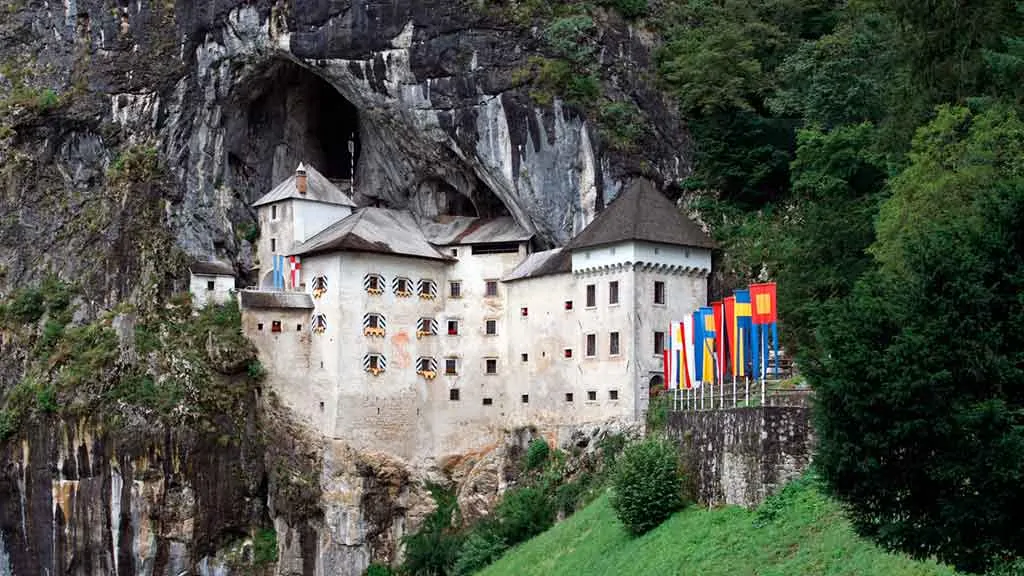
The place where man-made creativity and nature come together, Predjama Castle has the wow factor since it’s a 4-story fortress built into the cave mouth of a 123-meter high cliff, making it quite the tourist attraction.
An 800-year-old Medieval marvel, and the largest cave castle in the world, Predjama Castle needs to be seen to be believed!
Where: Predjama, Slovenia
When: 12th century
Style: Renaissance
Open for visit: Yes. Click here for more information.
You might be interested in the following:
From Ljubljana: Postojna Cave & Predjama Castle Tour
From Trieste: Postojna Cave & Predjama Castle
3. Castillo de Coca

This late Medieval castle combines Gothic and Moorish architecture and is considered one of the best examples of a castle palace featuring Mudejar architecture in the whole of Spain.
Located in the picturesque walled town of Coca, the Castilian castle has 2 square baileys, polygonal towers, and a dry moat and would have been impenetrable during Medieval times.
Where: Coca, Segovia, Spain
When: 15th century
Style: Gothic / Moorish
Open for visit: Yes. Click here for more information. Guided tours in Spanish only.
4. Chateau Pierrefonds

This impressive fortress retains most of its defensive military architecture from the Middle Ages despite undergoing major restoration work in the 19th century to restore it to its former glory after it was torn down by Louis XIII at the start of the 17th century.
Admire the crenelated towers, take a walk around the battlements, and soak up the Medieval atmosphere.
Where: Pierrefonds, Picardy, France
When: 14th century
Style: Romanesque
Open for visit: Yes. Click here for more information.
Tip: Click here to book your Château de Pierrefonds Fast Track tickets.
5. Hunyadi Castle or Corvin Castle

Otherwise known as Corvin Castle, the castle at Hunedoara is one of the biggest castles in Europe and is included as 1 of the 7 Wonders of Romania.
The most impressive Medieval castle in the country; legend has it that not only was Dracula imprisoned there, but Vlad the Impaler was too. No matter what you make of the ‘ghost stories,’ the Knight’s Hall, the spiral staircases, and the rectangular towers are sure to impress.
Where: Hunedoara, Romania
When: 15th century
Style: Gothic-Renaissance
Open for visit: Yes. For more information, check here.
You might be interested in the following:
From Timisoara: Corvin Castle and Turda Salt Mine Day Trip
From Cluj: Day Trip to Corvin Castle and Alba Carolina
6. Schloss Wartburg
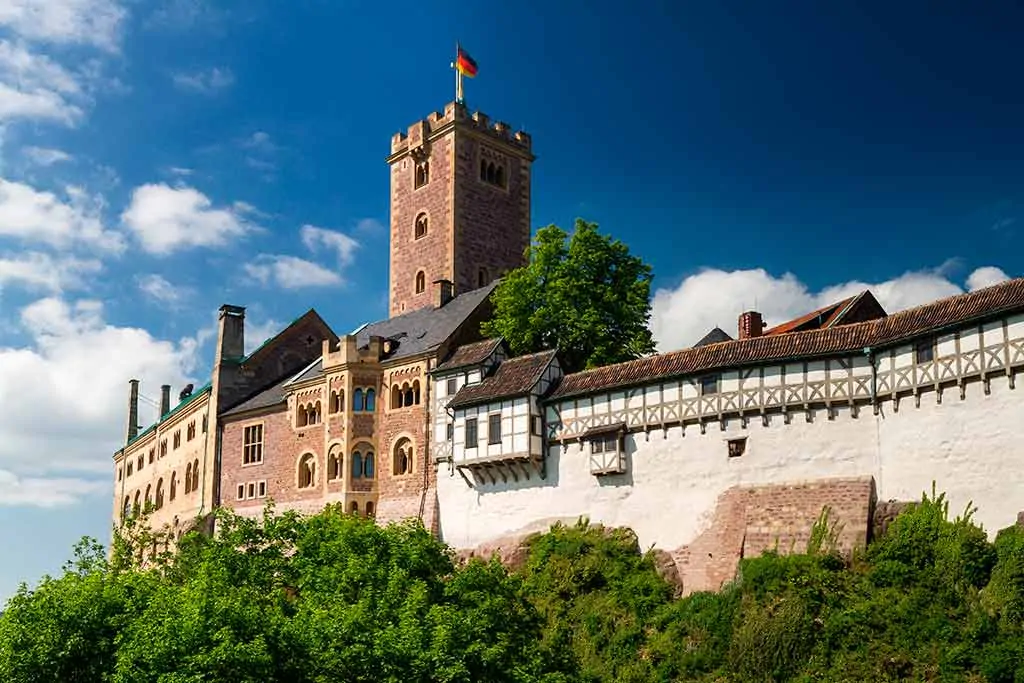
This UNESCO World Heritage has more than 1,000 years of history to discover.
Step inside to see the restored Medieval architecture and the Wartburg Castle Art Collection, which includes paintings, tapestries, and furniture, before learning the history of this hilltop castle at the onsite museum at what was once the medieval Court of the Muses.
Where: Eisenach, Thuringia, Germany
When: 12th century
Style: Romanesque
Open for visit: Yes. Click here for more information.
7. Chateau Comtal
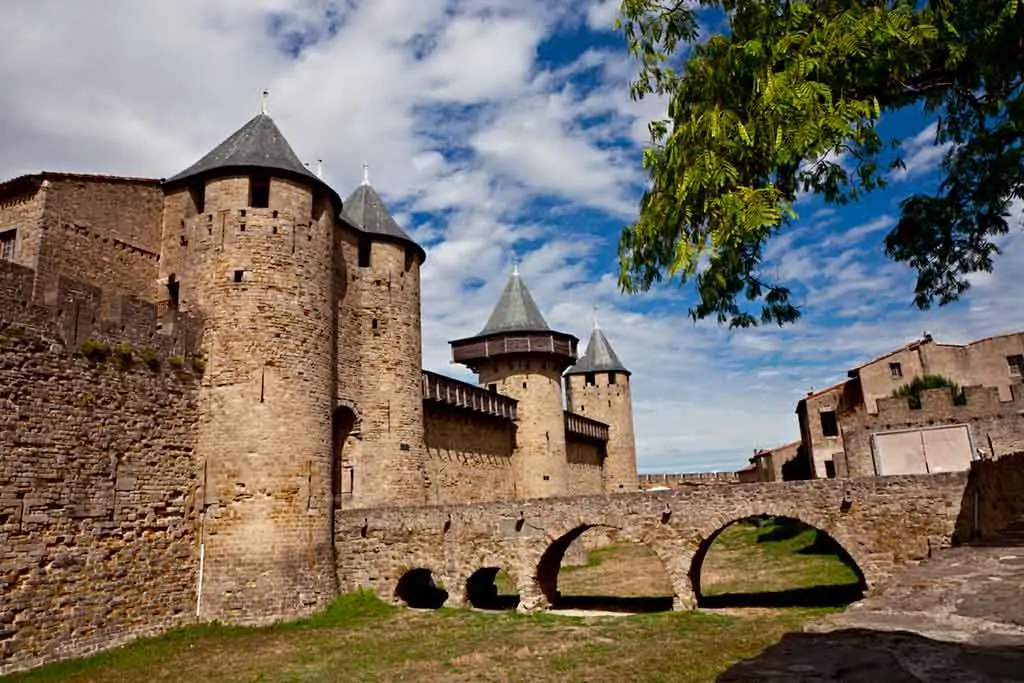
At the heart of the biggest preserved Medieval fortified city in Europe sits the Medieval Chateau Comtal de Carcassonne. Hugely impressive, the UNESCO-listed castle that we see today was originally a 6th-century hill fort.
Its Medieval fortifications are some of the finest that remain in Europe, so walk the ramparts and admire the view of the fairytale-like Medieval city with its towers, walls, barbicans, and drawbridges.
Where: Carcassonne, France
When: 12th century
Style: Gothic
Open for visit: Yes. Click here for more information.
You might be interested in the following:
Carcassonne: Castle and Ramparts Skip-the-Line Ticket
Cité de Carcassonne: Guided Tour
8. Alhambra de Granada
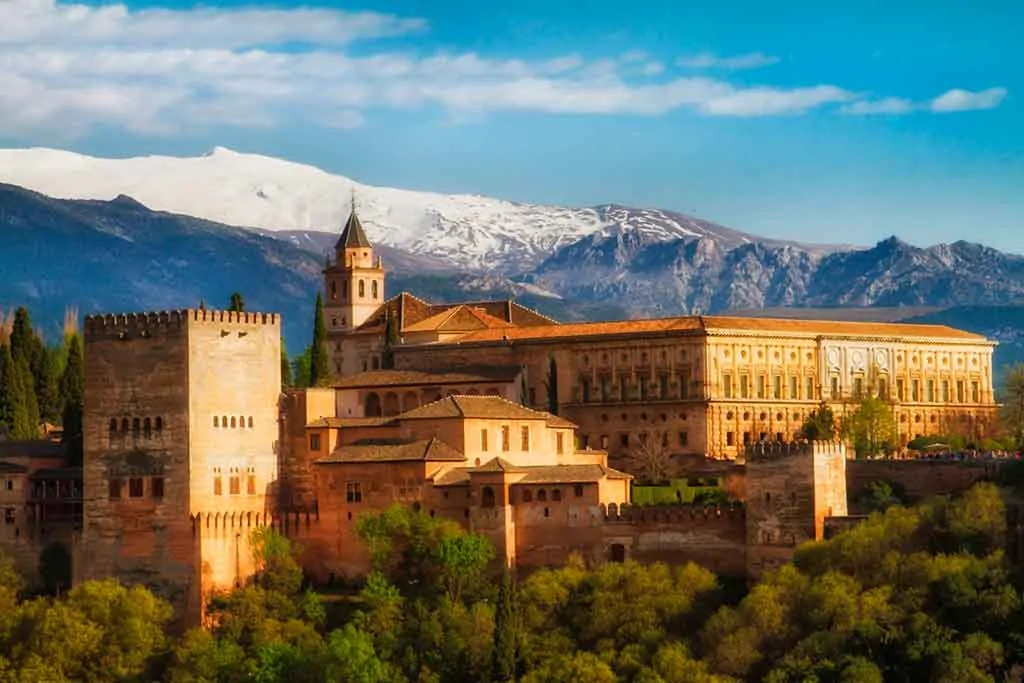
One of the most distinct Medieval strongholds not just in Spain but the world, the Alhambra is a highly-sophisticated sprawling palace-fortress complex full of Moorish architecture and pretty courtyard patios.
A Royal Residence from the 13th century, it later became a Christian Court before being abandoned but has remained intact to this day, the only Medieval palace in the world that has not been partially lost or destroyed.
Where: Granada, Spain
When: 9th century
Style: Moorish
Open for visit: Yes. For more information, check here.
Tip: Book your tickets in advance or book a guided tour to skip the lines. I recommend the following:
Granada: Alhambra, Nasrid Palaces, and Generalife Tour
Alhambra: Nasrid Palaces & Generalife Ticket with Audioguide
9. Burg Eltz
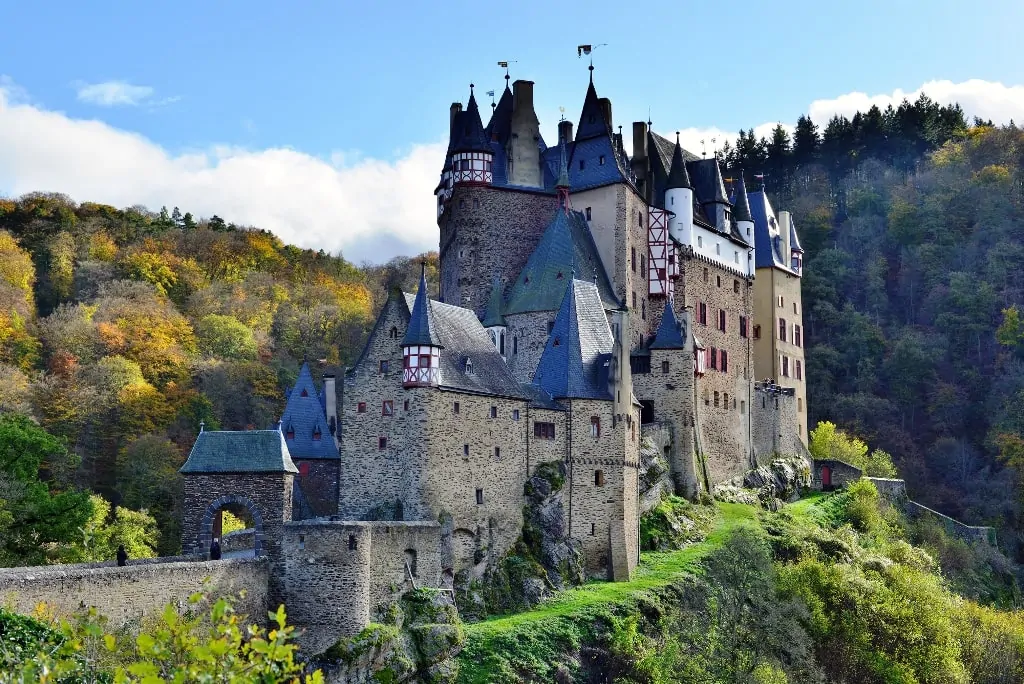
Built on a forested hilltop above the river Moselle, this fairytale-like Medieval castle is quite simply stunning! It is 1 of 3 castles on the left bank of the River Rhine that hasn’t been destroyed and remains fully intact, a rarity for Medieval castles, even surviving the bombings of WWII.
Containing countless treasures, visitors can step inside on a guided tour to see some of the 100 rooms and realize that fairytale castles do exist!
Where: Wierschem, Rhineland-Palatinate, Germany
When: 12th century
Style: Medieval, Gothic
Open for visit: Yes, click here for more information.
You might be interested in the following: Frankfurt: Day Trip to Eltz Castle.
10. Castel del Monte

Built by the Holy Roman Emperor Frederick II, Castel del Monte is a unique piece of medieval military architecture that blends elements from classical antiquity, the Islamic Orient, and north European Cistercian Gothic into one with a mathematical and astronomical precision to the layout that’s second to none, it is octagonal in shape with eight octagonal towers, one at each corner.
Where: Andria, Apulia, Italy.
When: 13th century
Style: Gothic with other elements
Open for visit: Yes. Click here for more information.
11. Alcazar de Segovia

One of the most distinctive castle palaces in Spain and the real-life inspiration for Walt Disney’s Snow White Castle, the Alcazar de Segovia is a marvelous feat of architecture, shaped like the bow of a boat.
Step inside this Medieval castle to visit the Hall of Ajimeces with its collection of artwork, the Hall of Kings, the Hall of the Throne, and the prisons and dungeons.
Where: Segovia, Spain
When: 13th century
Style: Gothic
Open for visit: Yes, click here for more information.
You might be interested in the following: From Madrid: Toledo and Segovia Guided Tour with Avila Option.
12. Bojnice Castle

Looking like it comes straight from the pages of a fairytale, Bonjnice Castle is easily the most picturesque castle in the whole of Slovakia. Standing on the site of an older 11th-century Medieval castle, it is one of the most important and oldest monuments in the country. Step inside to see the collections of art and artifacts in the onsite museum.
Where: Bojnice, Slovakia
When: 12th century
Style: Gothic-Renaissance
Open for visit: Yes. Click here for more information.
13. Prague Castle
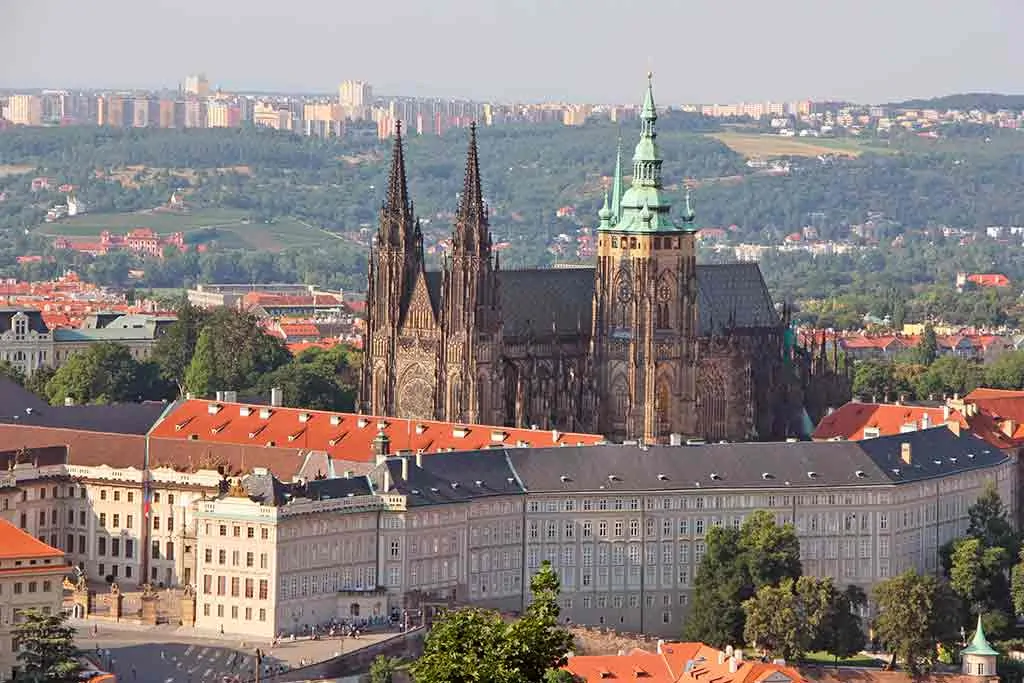
The largest Medieval castle in Europe and the largest coherent castle complex in the world, Prague Castle has a history going back 1,000 years and was once the seat of the Kings of Bohemia.
Comprising palaces and ecclesiastical buildings of various architectural styles from the 10th-14th century, today, the castle is the seat of the President of the Czech Republic.
Where: Prague, Czech Republic
When: 9th century
Style: Romanesque/Gothic
Open for visit: Yes. Click here for more information.
You might be interested in the following:
Prague Castle 2.5-Hour Tour Including Admission Ticket
Prague: Skip-the-line Castle Ticket & optional Audio Guide
14. Krivoklat Castle
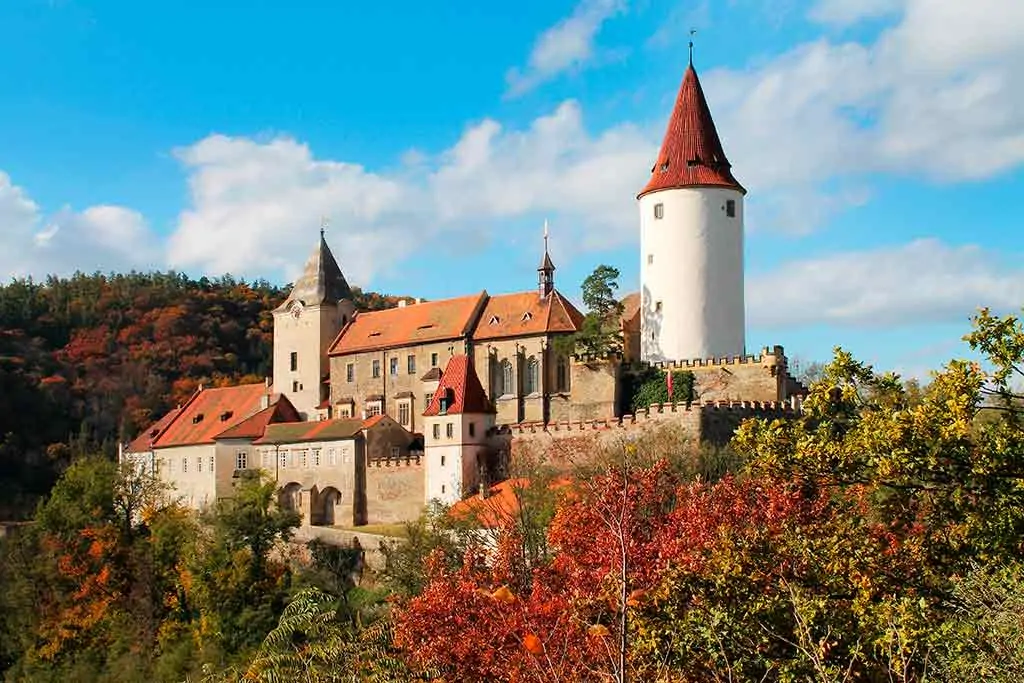
One of the oldest and most important seats of Czech Princes and Kings, the medieval fortified castle of Krivoklat stands out from its surroundings thanks to its monumental tower.
Similar in style to a French castle, it includes a beautiful Gothic chapel and the Fürstenberg library. Visitors can also explore the dungeon with torture chambers and the King’s Chamber as they learn some Czech history.
Where: Krivoklat, Central Bohemia, Czech Republic
When: 13th century
Style: Gothic
Open for visit: Yes. Click here for more information.
You might be interested in: From Prague: Křivoklát Castle & Glassworks Visit with Lunch.
15. Bran Castle
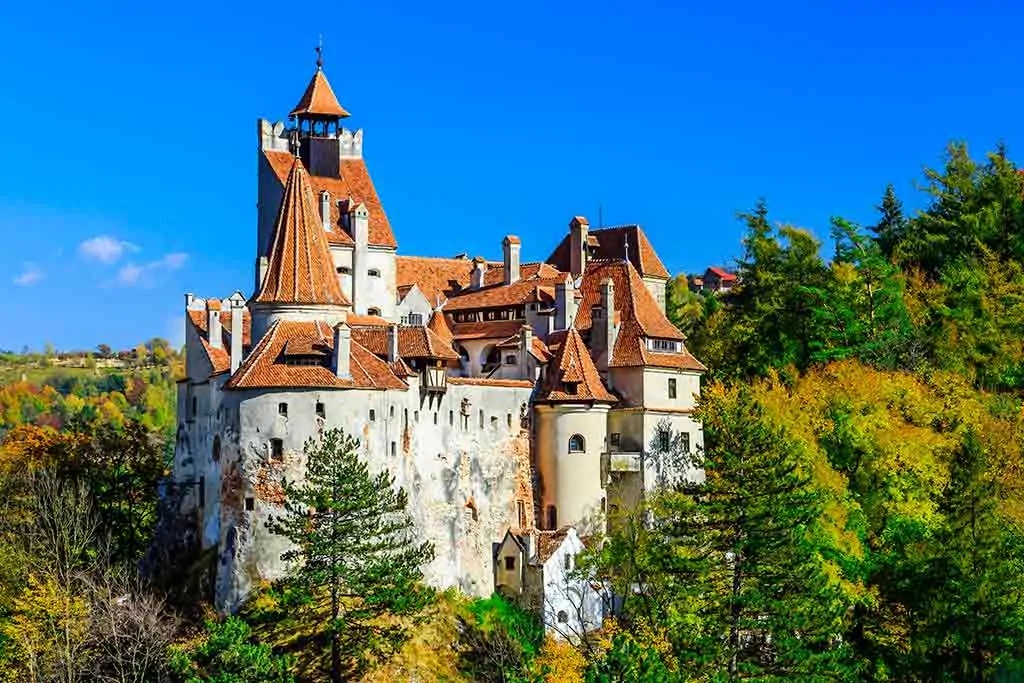
This iconic medieval fortress is famous for its association with Count Dracula, the castle being the only one in Transylvania to fit Bram Stoker’s description of Dracula’s Castle and the location for the 1992 movie.
Myth and horror movies aside, Bran Castle was built to defend Transylvania’s border on a Teutonic Knights stronghold dating from 1212.
Where: Bran, Brașov, Romania
When: 13th/14th century
Style: Medieval
Open for visit: Yes. Click here for more information.
Here some great options on how to visit the Bran Castle
– Skip the line ticket to Bran Castle
– Skip the line ticket to Bran Castle with a guided tour.
– Day trip from Bucharest that includes a visit to Bran Castle, Peles Castle, and Brasov.
16. Malbork Castle
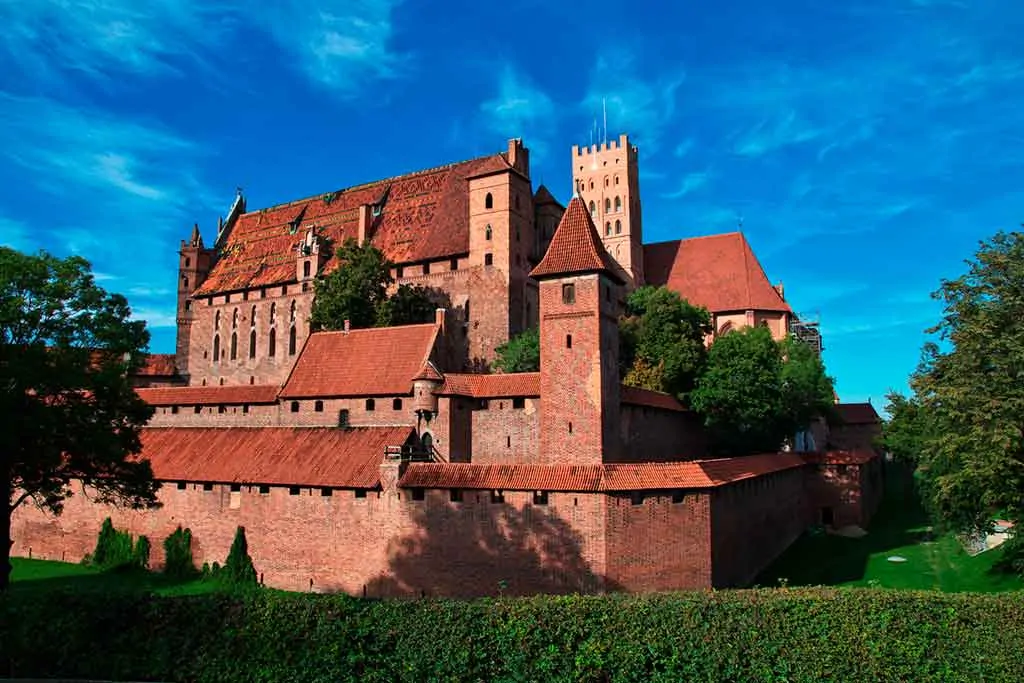
A classic example of a Teutonic castle and fortress, Malbork Castle is the largest brick-built castle in the world.
Starting as a fortress, Malbork later became a seat of the Grand Master of Teutonic Knights, playing a fundamental role in the defense system of Teutonic Prussia before becoming a temporary royal residence.
Where: Malbork, Poland
When: 13th century
Style: Gothic
Open for visit: Yes. Click here for more information.
You might also like the following: Gdansk: Malbork Castle Regular Tour.
Check out: The best castles in Poland.
17. Château de Chillon
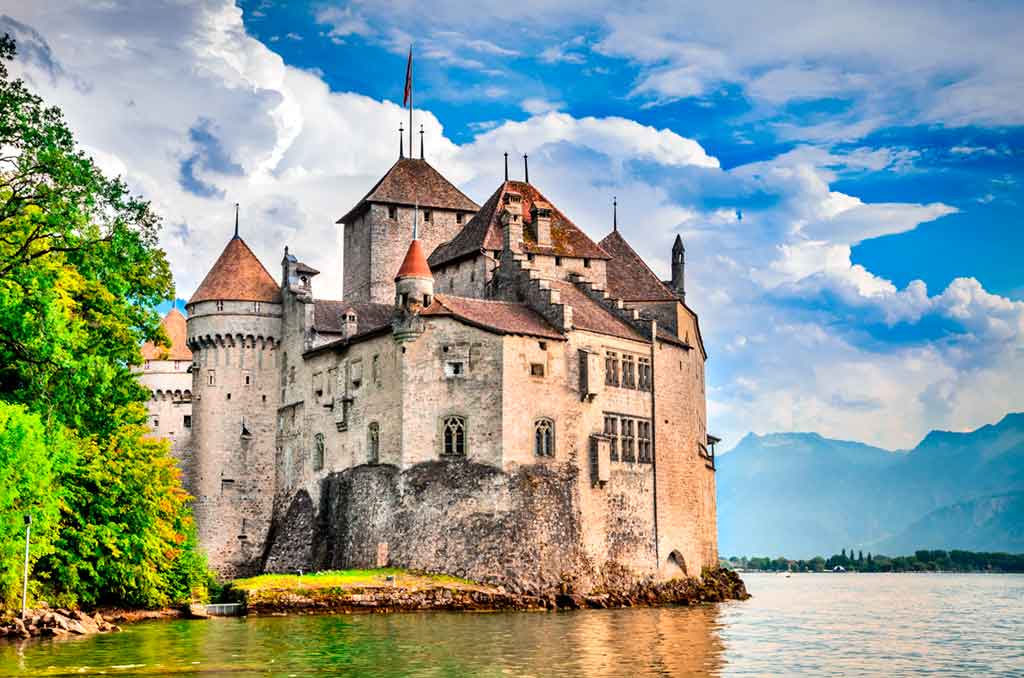
Located on the shores of Lake Geneva with exceptional views of the mountains behind sits the medieval island fortress of Chillon.
Owned by the Counts of Savoy between the 12th-16th centuries, today, Chateau de Chillon houses a museum showcasing medieval inventions that we still use today, as well as medieval wall paintings.
Where: Veytaux, Vaud, Switzerland
When: 12th century
Style: Medieval / Romanesque
Open for visit: Yes. Click here for more information.
Click here to book your Chateau Chillon Entrance Ticket.
18. Festung Hohensalzburg
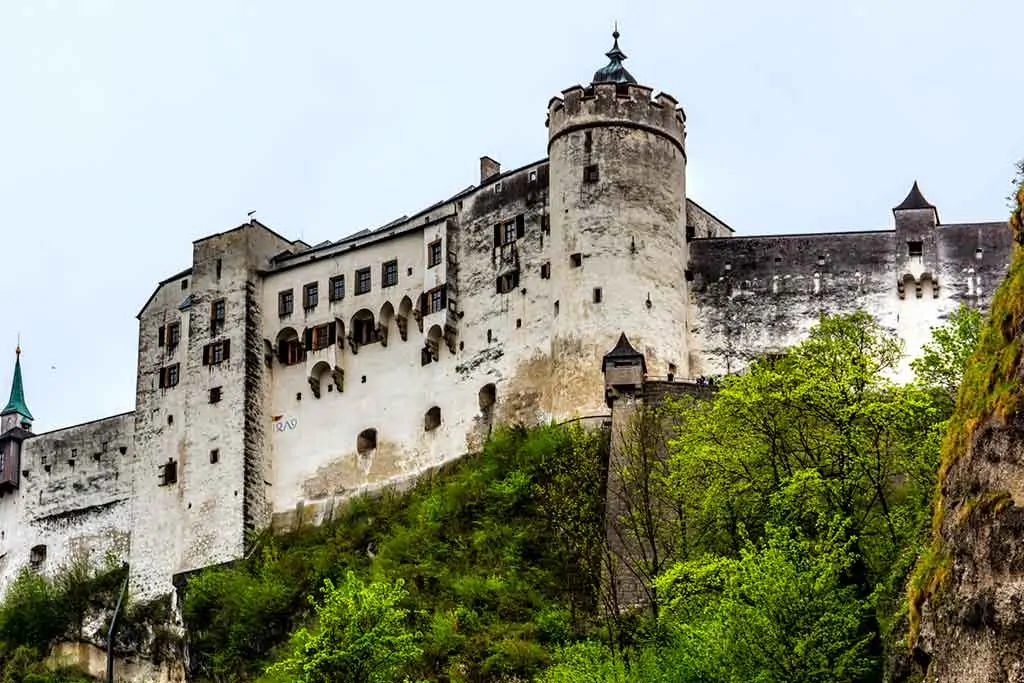
This large fully-preserved medieval castle complex was built for the Prince-Archbishops of Salzburg and sits at the top of Festungsberg hill. Used as a fortress, gunpowder store, barracks, and prison, it was abandoned in 1861.
Today visitors can enter through the medieval gates and take a guided tour through the interior rooms and up to the lookout tower.
Where: Salzburg, Austria
When: 11th century
Style: Medieval/Baroque
Open for visit: Yes. Click here for more information.
Click here to buy your Hohensalzburg Fortress Admission Ticket.
19. Château Gaillard des Andelys

Now lying in ruin, this 800-year-old medieval fortified castle was built upon chalk cliffs for Richard the Lionheart, the King of England and Duke of Normandy, as a symbol of political power.
Built-in just two years and being one of the first castles in Europe to use machicolation (an opening in the floor between the supporting corbels of a battlement, through which stones or boiling water/oil could be dropped on attackers), today visitors can view the inner bailey.
Where: Les Andelys, Normandy, France
When: 12th century
Style: Gothic
Open for visit: Yes. Click here for more information.
20. Gravensteen
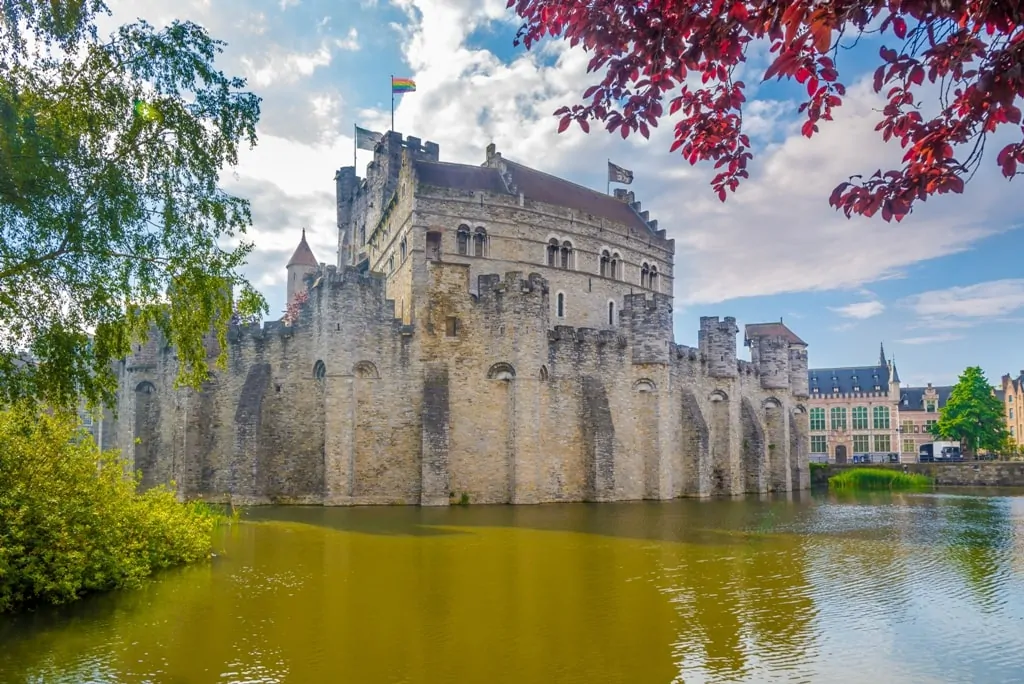
The Castle of the Counts is the only medieval castle to still remain in Flanders, with its moat and defense system relatively intact.
Used as a court and a prison today, visitors can step inside to see the museum of weapons and torture chambers as well as the gatehouse, ramparts, and keep.
Where: Ghent, Belgium
When: 10th/12th century
Style: Gothic
Open for visit: Yes. Click here for more information.
21. Karlštejn Hradd
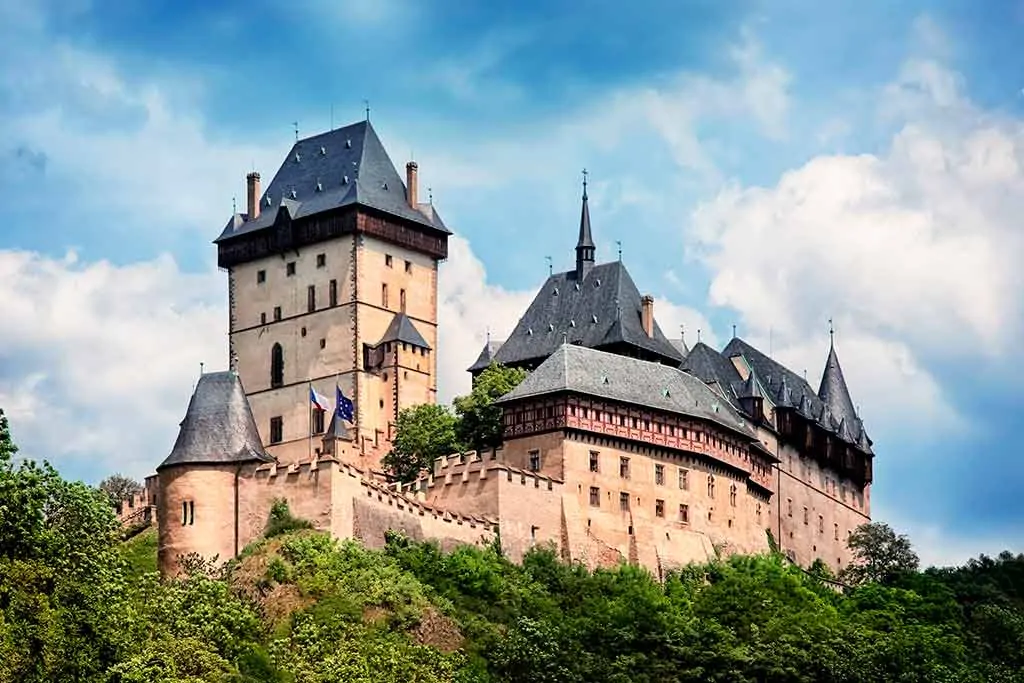
This impressive medieval castle was built for Charles IV, the Holy Roman Emperor-elect and King of Bohemia, as a place to store royal treasures and holy relics, including the crown jewels.
Visitors can see the state and private rooms of Emperor Charles IV and/or the sacred rooms of the castle with the chapel of the Holy Cross.
Where: Karlštejn, Prague, Czech Republic
When: 14th century
Style: Gothic
Open for visit: Yes, by guided tour only. Click here for more information.
Check out: Karlstejn Castle: Skip-the-Line Ticket and Tour from Prague.
22. Muiderslot
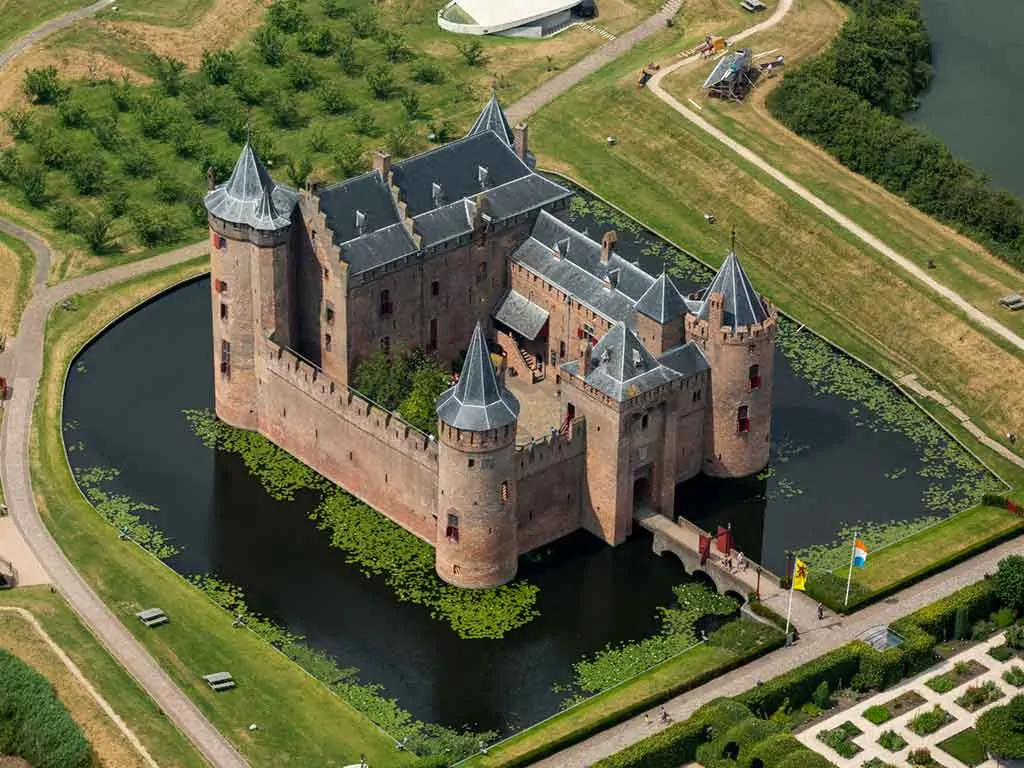
One of the most picturesque medieval castles in Holland, and also one of the best-preserved, Muiderslot Castle, otherwise known as Muiden Castle, is located at the mouth of the River Vecht.
Explore its 700 years of history by viewing the restored 17th-century rooms plus collections of armor and weapons at what is now a national museum.
Where: Muiden, North-Holland, Netherlands
When: 12th century
Style: Renaissance
Open for visit: Yes. Click here for more information.
Click here to buy your tickets for Muiderslot Castle.
23. Vianden Castle

On the hill above the medieval city of Vianden stands a fairytale-like castle palace. Built on the site of an older Roman castle and Carolingian refuge, Vianden Castle was one of the most impressive feudal residences of the Roman and Gothic eras.
Try to visit the castle at the end of July / beginning of August when the castle comes to life with the medieval festival with knight camps and medieval tournament shows.
Where: Vianden, Luxembourg
When: 11th-14th century
Style: Gothic
Open for visit: Yes. Click here for more information.
Click here to book your Vianden Castle Entry Ticket.
24. Hochosterwitz
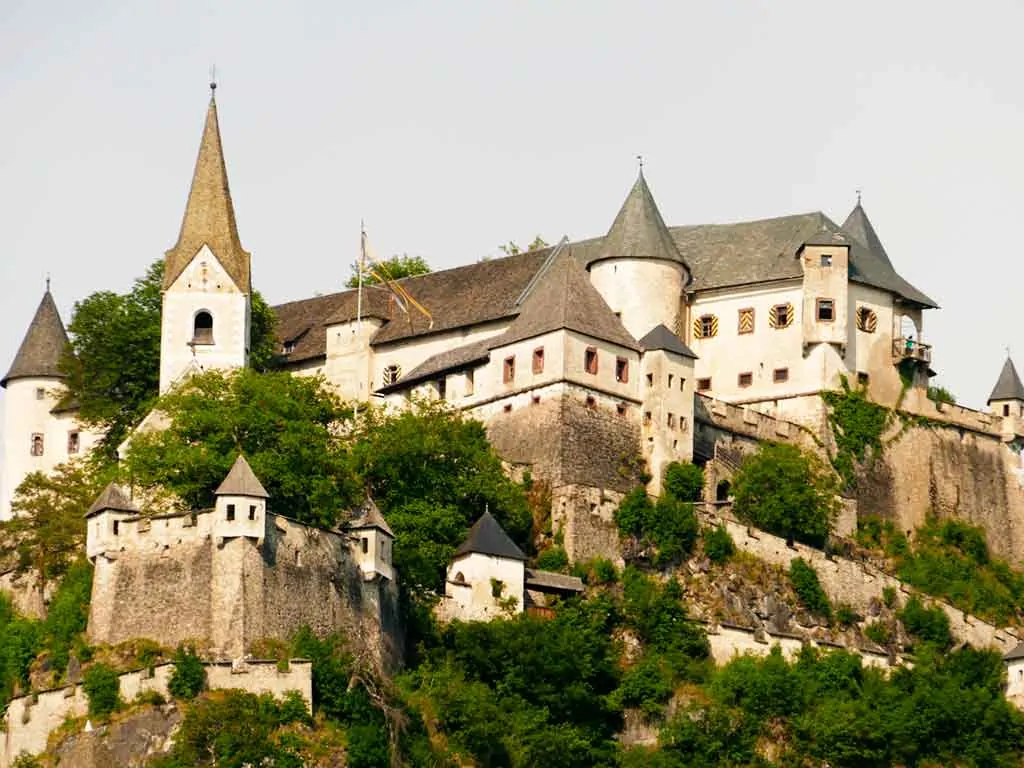
One of Austria’s most impressive and imposing medieval castles/strongholds, Hochosterwitz is a rock castle that towers above the valley at 172 meters.
Regarded as the model of a medieval castle and boasting 14 castle gates, the exterior has changed very little since the 16th century and has been owned by the Khevenhüller family since 1571.
Where: Launsdorf, Austria
When: 14th century
Style: Renaissance
Open for visit: Yes. Click here for more information.
25. Wawel Castle
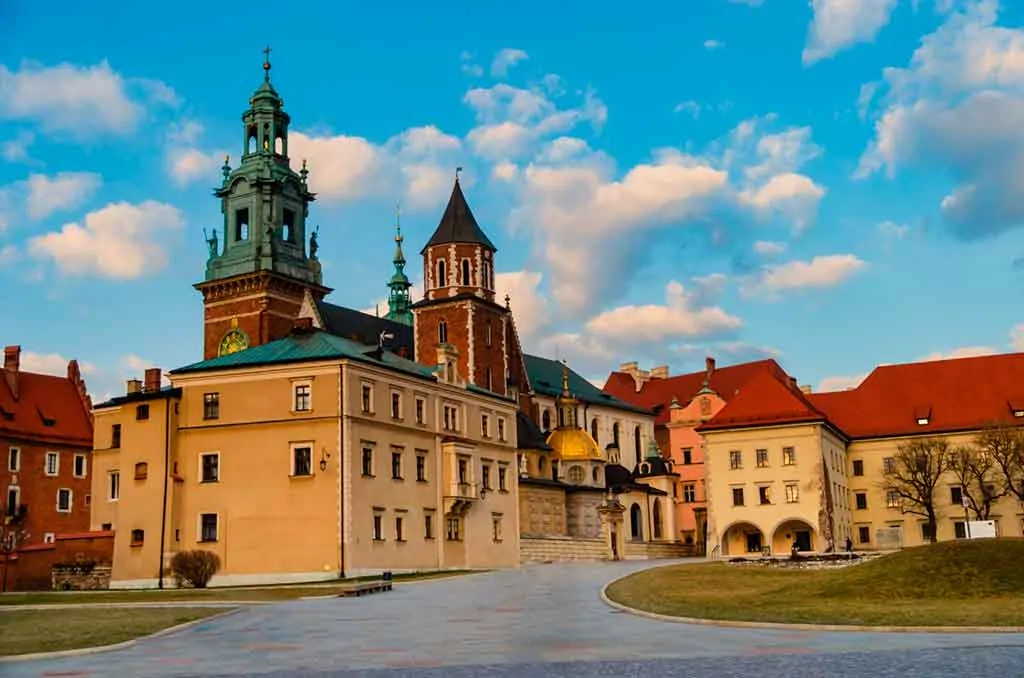
Built for King Casimir III the Great, the fortified complex that includes Wawel Castle and Wawel Royal Cathedral is made up of nearly all European architectural styles.
Overlooking the Vistula River atop Wawel Hill, the Royal Castle was home to the Polish ruler until the capital of Poland was moved to Warsaw, from which point the castle was used as a military hospital and later became the headquarters of the Nazi Governor-General.
Where: Krakow, Poland
When: 13th-14th centuries
Style: Romanesque, Gothic, Renaissance
Open for visit: Yes. Click here for more information.
Click here to book your Wawel Castle Guided Tour with Entry Tickets.
26. Kaiserburg Nürnberg
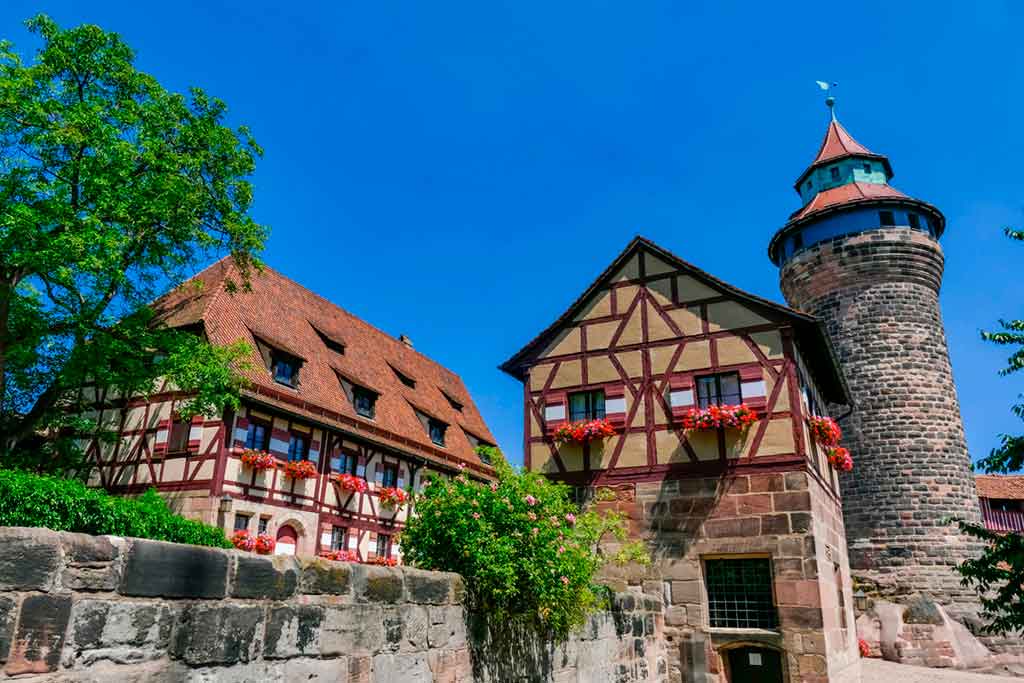
One of the most formidable fortifications in Europe, Nuremberg Castle, complete with the double chapel, was an important imperial palace of the old Holy Roman Empire, later becoming a residential palace for King Maximilian II, who completed the works of his father, King Ludwig II.
Where: Nuremberg, Bavaria, Germany
When: 13th-14th century
Style: Medieval
Open for visit: Yes. Click here for more information.
27. Castello di Tirol

The ancestral seat of the Counts of Tyrol, Tirol Castle, or Tyrol as it’s better known, is the symbol of the area.
Retaining its chapel, which has gothic frescoes as well as impressive portals, the castle’s interior today is home to the South Tyrolean Museum of Culture and Provincial History.
Where: Tirol, Italy
When: 13th century
Style: Romanesque
Open for visit: Yes. Click here for more information.
28. Schloss Tarasp
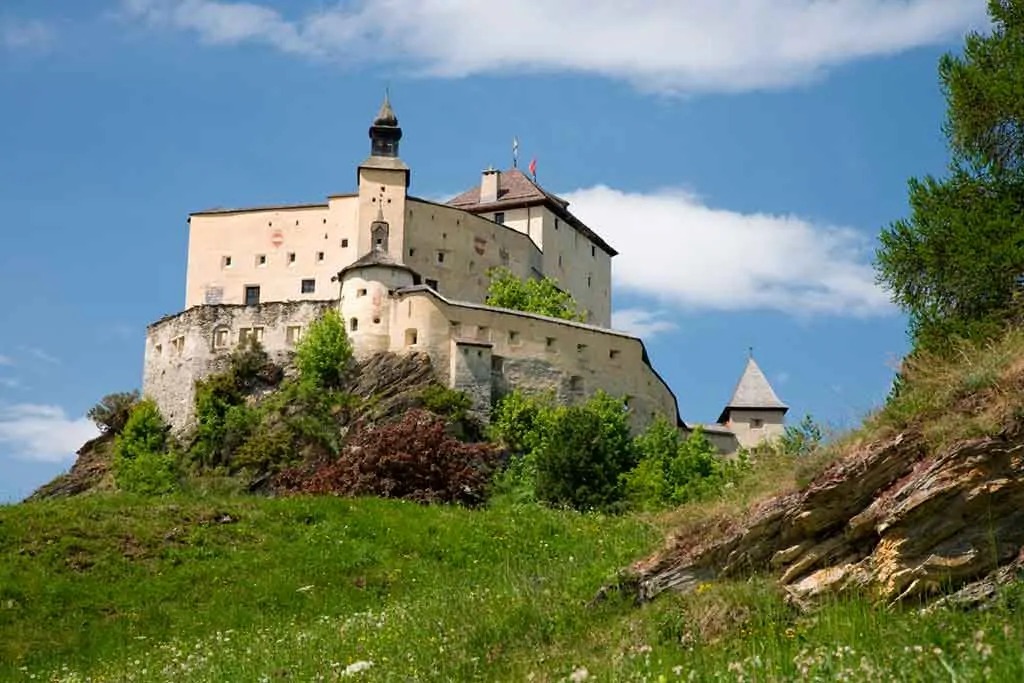
Built for the Lords of Tarasp and originally belonging to Austria, this 1,000-year-old fairytale-like castle is the only one in the area not to be in ruin, all thanks to a mouthwash inventor who saved and restored it!
See the medieval keep, the Romanesque Chapel of St John’s, and admire the courtyard before stepping inside to admire the wall paintings from the late middle ages.
Where: Lower Engadin, Graubünden, Switzerland
When: 11th century
Style: Renaissance
Open for visit: Yes. Click here for more information.
29. Spišský Hrad
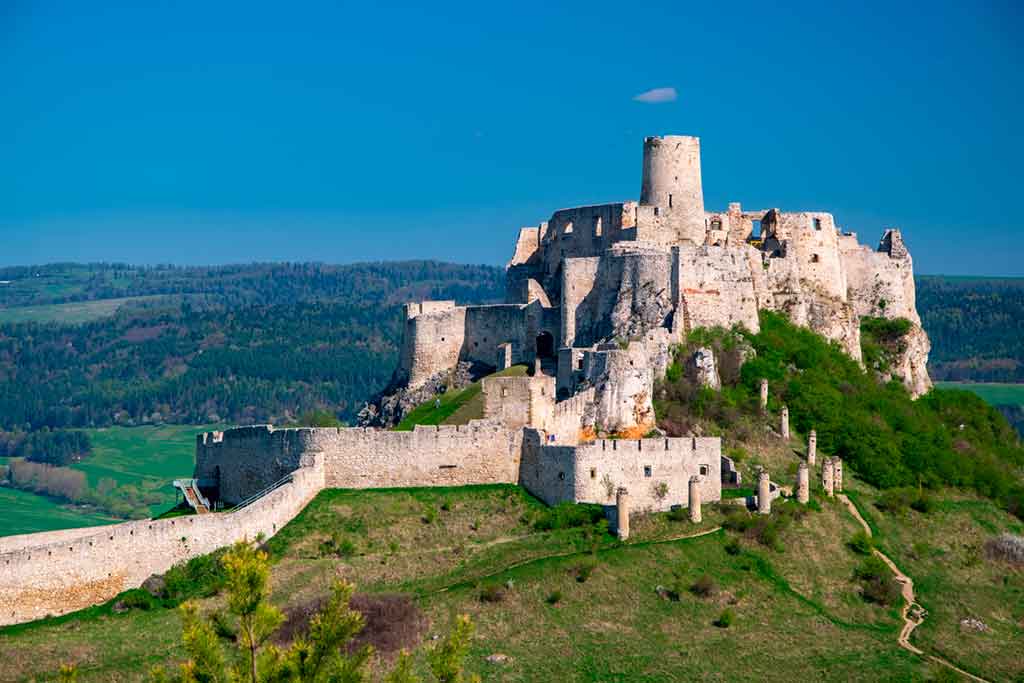
This 800-year-old ruined medieval castle is one of the largest castle complexes in Central Europe, covering more than 40,000 square meters.
Comprising the upper castle and middle and lower courtyard, Spis Castle, as it’s called in English, rises up 634 meters above sea level from its hilltop position and has been the site of human occupation since Neolithic times.
Where: Žehra, Spiš, Slovakia
When: 12th century
Style: Romanesque
Open for visit: Yes. Click here for more information.
30. Pfalzgrafenstein
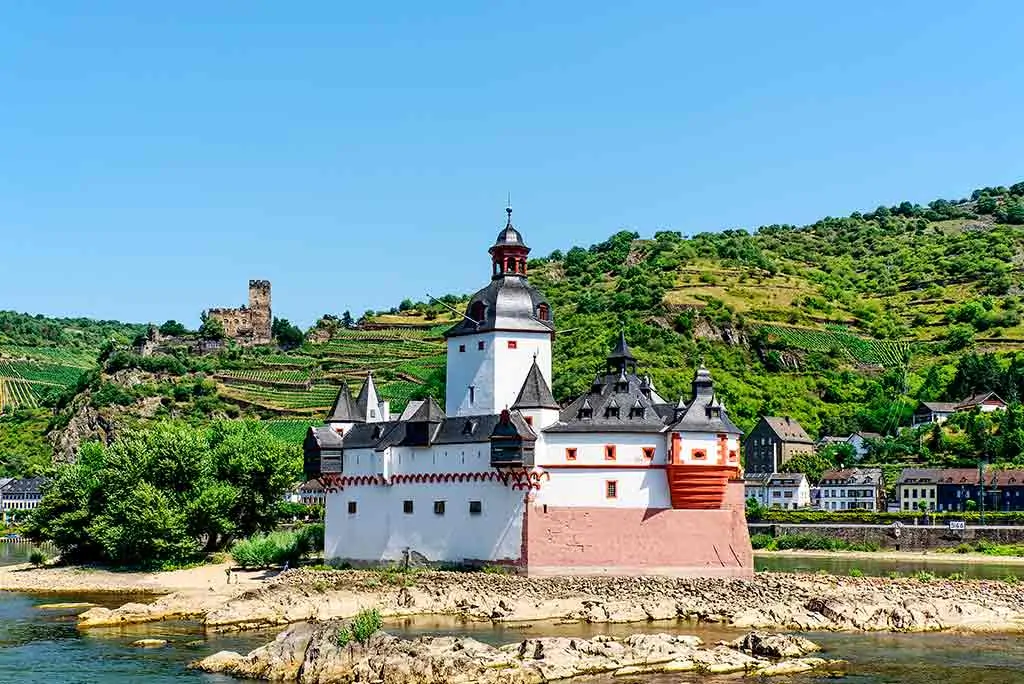
Sitting on a tiny island in the middle of the River Rhine sits a picturesque boat-shaped toll-station castle. Built-in an unusual pentagon shape to give the look of the bow of a boat, this castle was once a stronghold built by King Ludwig as a means to collect money.
Visitors can learn the fascinating history of the castle on a pre-booked guided tour led by costumed guides or simply sail by and admire the exterior on a ferry ride.
Where: Pfalz Island, Rhineland-Palatinate, Germany
When: 14th century
Style: Baroque
Open for visit: By appointment only and dependent on ferry times due to the tide. Click here for more information.
31. Castelvecchio
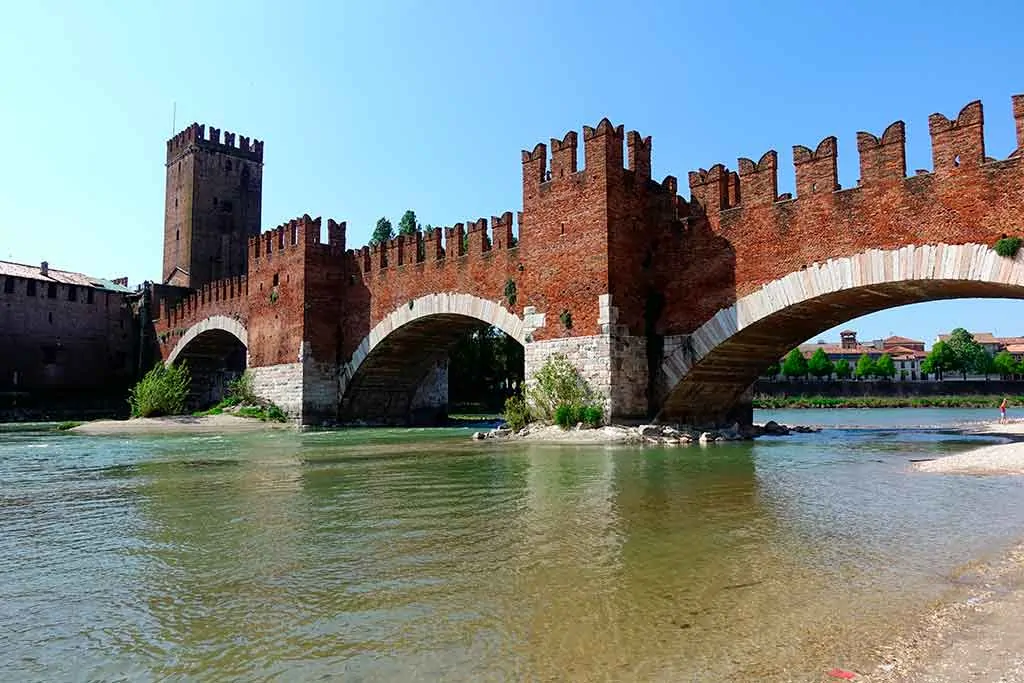
Once the most important military construction of the Scaliger dynasty during the Middle Ages, the fortress of Castle Vecchio is also a bridge, the construction connecting the castle to the left bank of the Adige River.
Walk across, admiring the view and noting the feat of engineering before entering what is now the civic Castelvecchio Museum with its collections of medieval, renaissance, and modern art.
Where: Verona, Italy
When: 14th century
Style: Gothic-Renaissance
Open for visit: Yes. Click here for more information.
FAQs about The Best Medieval Castles in Europe
Among the best medieval castles in Europe are the Alhambra de Granada in Spain, Carreg Cennen Castle in Wales, Predjama Castle in Slovenia, Castillo de Coca in Spain, Chateau Pierrefonds in France, Burg Eltz in Germany, and Bran Castle in Romania.
The largest medieval castle in Europe with the largest coherent castle complex in the world is Prague Castle in the Czech Republic. It is over 1000 years old and was once the seat of the Kings of Bohemia.
There are more than 10.000 medieval castles in Europe. Many are ruins today, but some are well-preserved, and it is possible to visit these medieval castles.
PIN IT!
